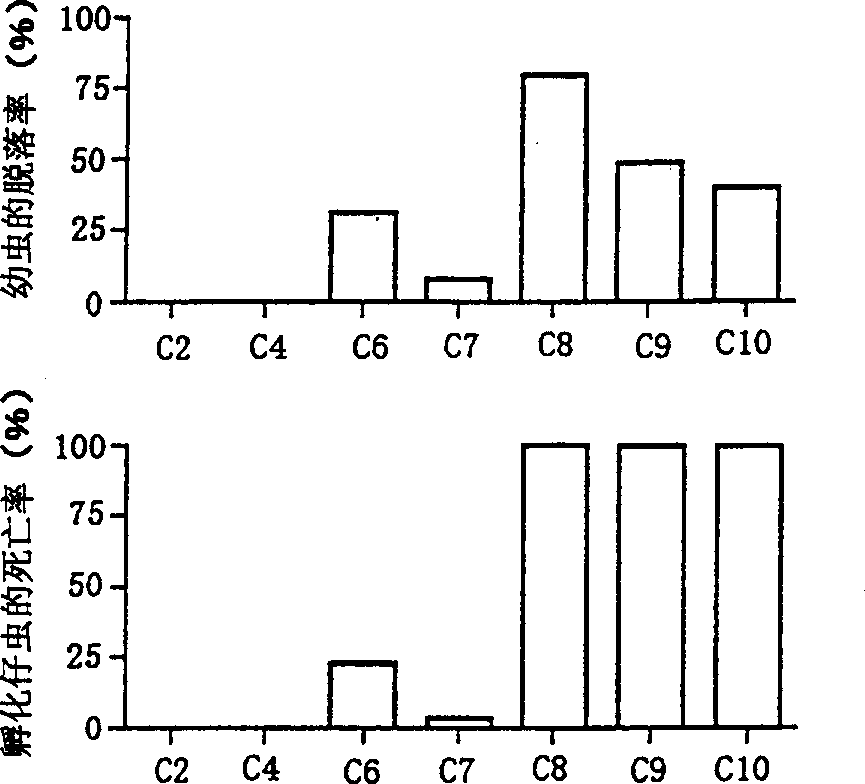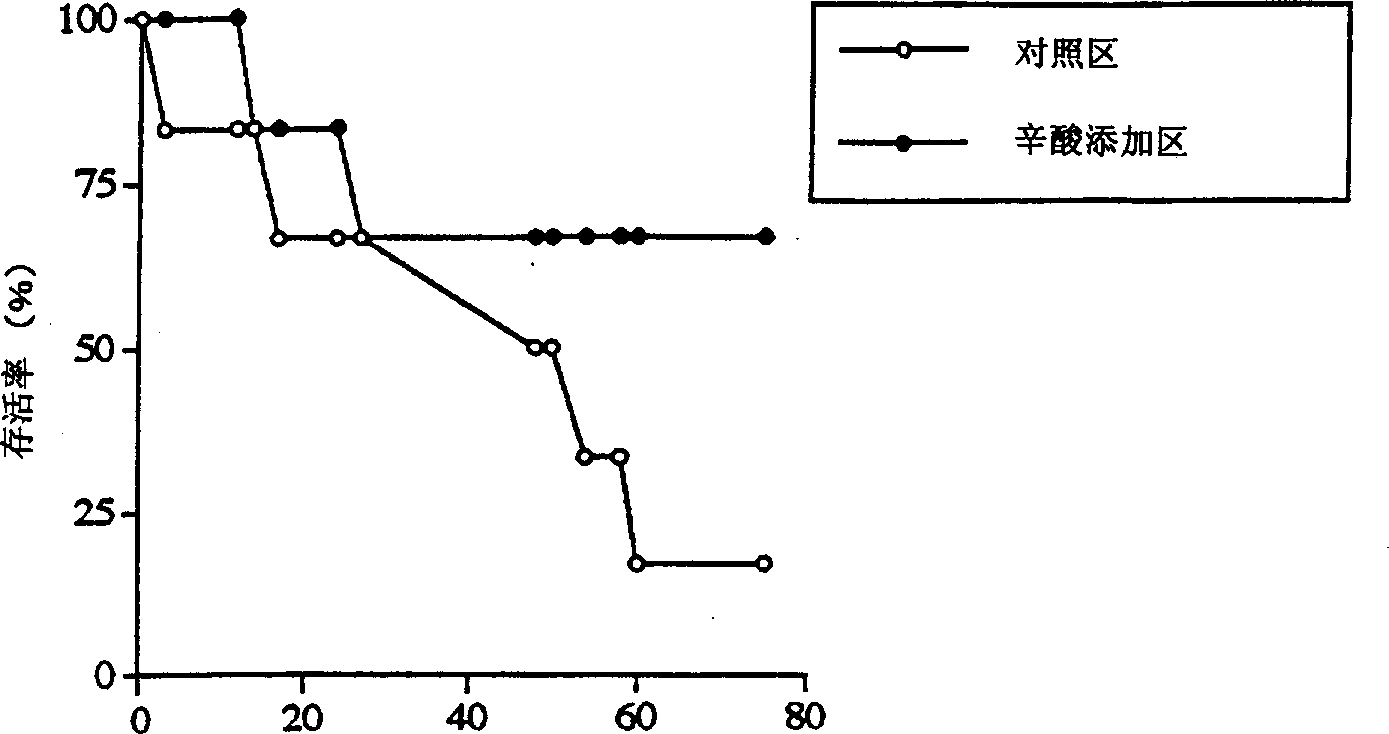Natural physiologically active substances efficacious against fish diseases and fish feeds containing the same
A technology for physiologically active substances and fish feed, which can be applied in animal feed, animal feed, organic active ingredients, etc., and can solve problems such as difficulty in reducing the level of infection in fisheries
- Summary
- Abstract
- Description
- Claims
- Application Information
AI Technical Summary
Problems solved by technology
Method used
Image
Examples
Embodiment 1
[0060]
[0061] Immerse the larvae of Heteroendotoxin in seawater dissolved with caprylic acid, and observe the structural damage (vacuolation, etc.) and lethality of the worm body. Caprylic acid is an edible natural substance contained in coconut oil, butter, and nuts. Used to treat patients with indigestion.
[0062] In [Experiment 1], the repelling effect of fatty acids centered on medium-chain fatty acids on parasites was investigated in test tubes. The parasites to be investigated are Heterotoxin bacilli belonging to platyzoans parasitic on the red-finned roundfish and Cyclamena belonging to protozoa which infect and cause damage to many fish. In [Experiment 2], Bibagine of the yellow-tailed snapper belonging to the metamorphosis, Heterocarina of the yellow-tailed snapper, Benedania of the yellow-tailed snapper, and Benedania of the flounder, parasitic in the muscle and in the heart, protozoan acanthus, which damages food utilization value, and arthropod lice, which ar...
Embodiment 2
[0152]
[0153] The antibacterial activity of medium-chain fatty acids is known, but the effect on fish disease bacteria has not been reported. In this example, in Test 8, the antibacterial activity of fatty acids centered on decanoic acid against fish disease bacteria in test tubes was investigated. In Test 9, it was investigated whether capric acid was added to the bait of star flounder to cure bacteriosis and prevent infection.
[0154] [Experiment 11]
[0155]
[0156] Performed by nephelometric method. Dissolve C2-C10 fatty acids in 2ml BHI liquid medium to a concentration of 500ppm. Inoculate representative bacteria (Vibrio, Edwardsiella, Enterococcus) that cause fish bacterial diseases in each adjusted medium 1×10 5 , and incubated at 23°C for 13 hours. After culturing, the turbidity at 600 nm was measured, and the turbidity was used as the amount of bacterial proliferation. The test was performed 2 times. The results are shown in Figure 19 (Vibrio), Figure 20...
Embodiment 3
[0167]
[0168] The antiviral activity of medium-chain fatty acids has been known, but there have been no reports of oral administration of fish viruses. In this example, we take the red fin puffer's mouth white disease, which is the most harmful among viral diseases, as the research object. Since the disease was reported in 1981, there have been reports of morbidity every year, which is very harmful, and there is no effective anti-epidemic treatment at present. In this example, it is investigated whether adding C6-C12 fatty acids to the bait of the red fin puffer has the effect of preventing the onset of white mouth disease after the fish is given medicine.
[0169] [Experiment 13]
[0170]
[0171] Test fish: Redfin pufferfish with an average weight of about 27.7g were used.
[0172] Experimental area: divided into two areas, that is, a fatty acid-added feed area fed with fatty acid-added feed and a control area fed with no-additive feed. The feed rate was 2% / day rela...
PUM
 Login to View More
Login to View More Abstract
Description
Claims
Application Information
 Login to View More
Login to View More - R&D
- Intellectual Property
- Life Sciences
- Materials
- Tech Scout
- Unparalleled Data Quality
- Higher Quality Content
- 60% Fewer Hallucinations
Browse by: Latest US Patents, China's latest patents, Technical Efficacy Thesaurus, Application Domain, Technology Topic, Popular Technical Reports.
© 2025 PatSnap. All rights reserved.Legal|Privacy policy|Modern Slavery Act Transparency Statement|Sitemap|About US| Contact US: help@patsnap.com



